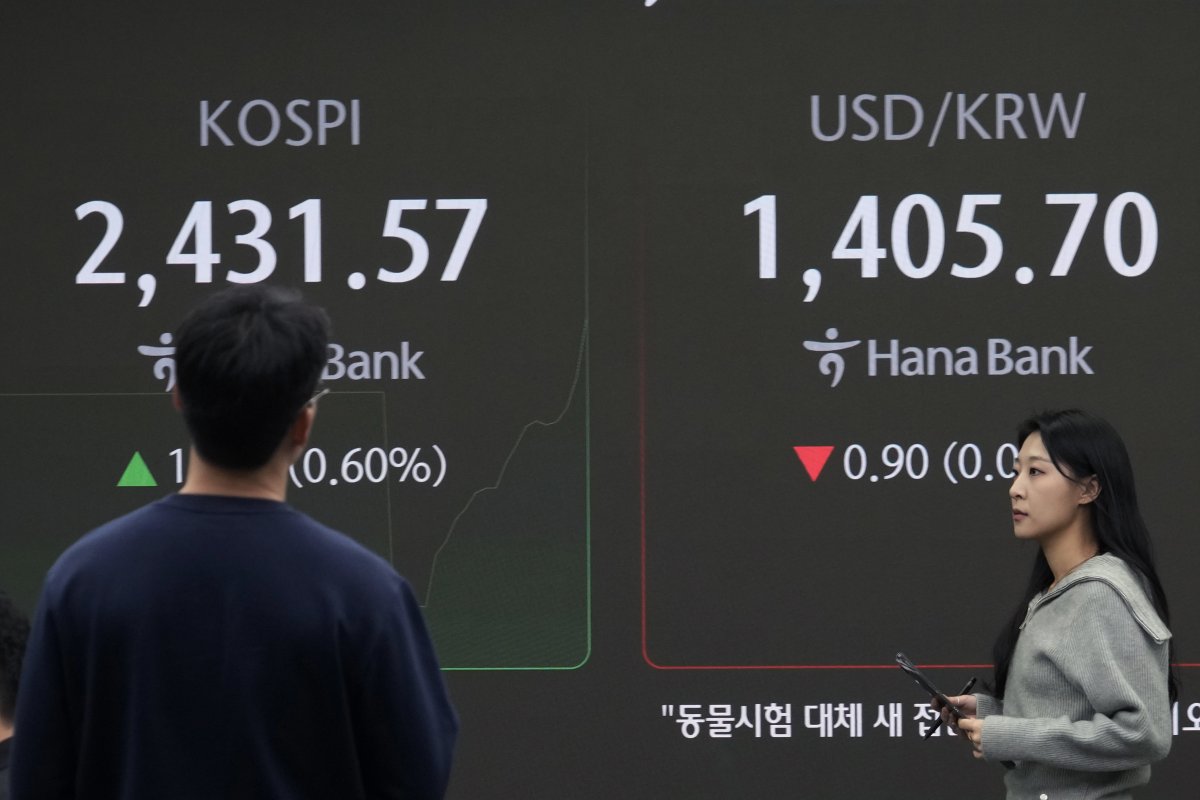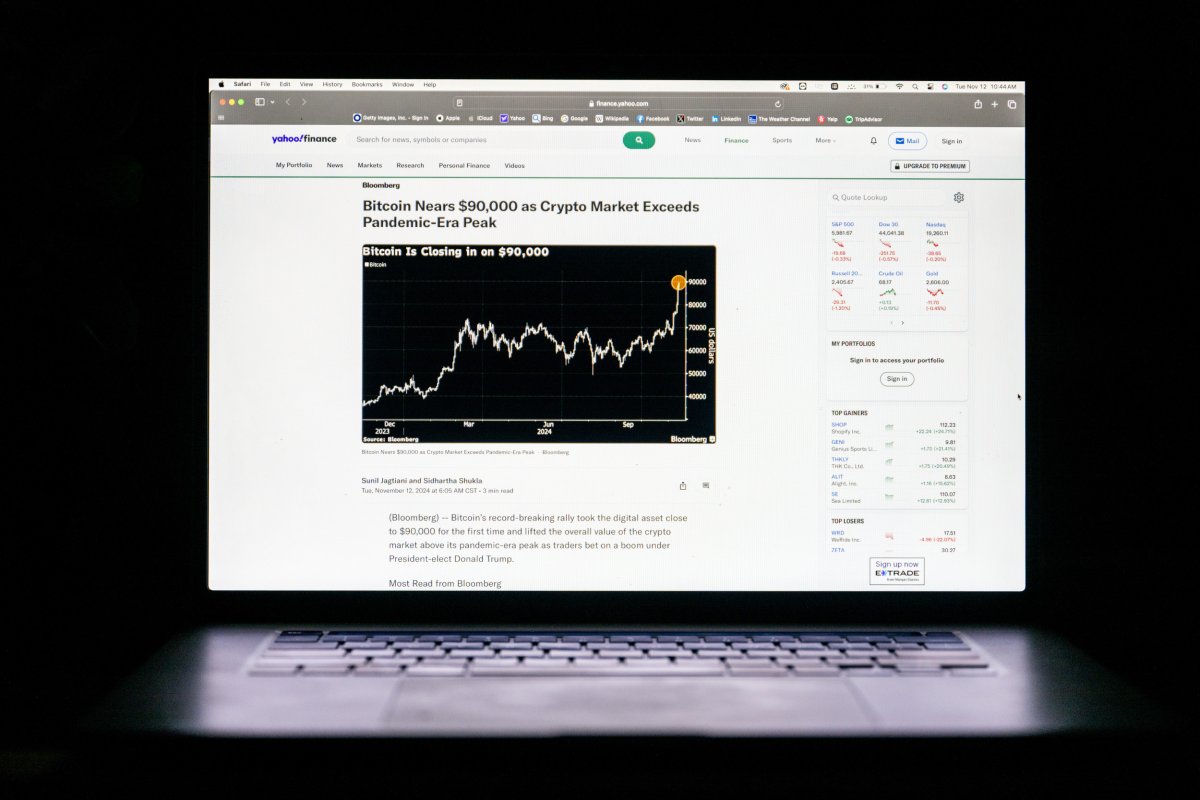A strong U.S. dollar unsettled Asian markets on Thursday, as investors assessed a U.S. inflation report that showed price increases.
The dollar’s continued rise—particularly against Asian currencies—has intensified economic pressure on the region since the U.S. election.
In Japan, the dollar climbed to 156.10 yen from 155.49 yen, reflecting expectations of currency gains linked to the incoming administration of President-elect Donald Trump.
If the pattern continues, the dollar’s strength is likely to exert increasing strain on economies that maintain substantial trade ties with China.
“For Asia, particularly those economies closely linked to China, the dollar’s dominance is poised to become an economic wrecking ball,” said Stephen Innes of Capital Economics.
AP Photo/Ahn Young-joon
Nations With Dollar Dominated Debt Brace Themselves
The strain of a stronger dollar has been visible in Asia‘s major stock indexes.
Japan’s Nikkei 225 fell 0.5 percent to 38,535.70, while Hong Kong‘s Hang Seng plunged two percent to 19,435.95.
China’s Shanghai Composite index also dropped 1.7 percent to 3,379.84, and Bangkok‘s SET index and Taiwan‘s Taiex both recorded declines.
India‘s Sensex index shed 0.2 percent.
“Countries with hefty USD-denominated debt are bracing for impact,” said Innes.

AP Photo/Peter Morgan, File
What Are the Fed’s Next Steps Following October’s Inflation Surge?
Economic data from the U.S. has fueled speculation of further interest rate cuts by the Federal Reserve, which could bring more volatility to global markets.
U.S. consumer inflation accelerated in October to 2.6 percent from 2.4 percent.
However, core inflation—an indicator seen as a predictor of future trends—remained steady, reinforcing expectations of additional support from the Fed. This has given traders an estimated 80 percent probability of a third rate cut in December, according to CME Group data.
Economists anticipate that Trump’s policies, which include lower tax rates, higher tariffs, and less regulation, may result in higher government debt and inflation, even as they potentially drive economic growth.

AP Photo/Ahn Young-joon
Marginal Changes in S&P 500, Dow, and Nasdaq
U.S. stock markets showed a mixed response to the inflation report.
The S&P 500 fell by less than 0.1 percent, ending a rally that had started after the Nov. 5 election. The Dow Jones Industrial Average inched up 0.1 percent, while the Nasdaq composite slipped 0.3 percent.
In the energy sector, U.S. benchmark crude oil declined by nine cents to $68.34 per barrel on the New York Mercantile Exchange, while Brent crude fell by two cents, trading at $72.26 per barrel. These declines came amid expectations that reduced rates could also affect global oil demand.
The global cryptocurrency market, also influenced by the dollar’s movements, saw Bitcoin trading at $91,590 after recently surpassing $93,000. Trump has expressed support for digital assets, signaling intentions to promote the U.S. as a leader in cryptocurrency adoption—the consensus remains that Bitcoin will break $100,000 eventually.

Brandon Bell/Getty Image
Future Projections for Asian Stocks
The dollar’s strength has also weighed on Asian currencies, with the Chinese yuan depreciating notably against the dollar.
The yuan, which was about seven per dollar in early October, now stands at 7.2245.
The Thai baht has similarly weakened since the U.S. election in line with other Asian currencies.
As U.S. monetary policies shift under the incoming administration, economists warn that an overly robust dollar could create additional hurdles for Asian markets—especially those with high levels of dollar-denominated debt.
Meanwhile, European stocks rose on Thursday—Germany‘s DAX advanced 1.2 percent to 19,223.90, while France‘s CAC 40 rose 0.8 percent to 7,274.79. Britain‘s FTSE 100 edged up 0.1 percent, reaching 8,042.07.
This article includes reporting from The Associated Press


